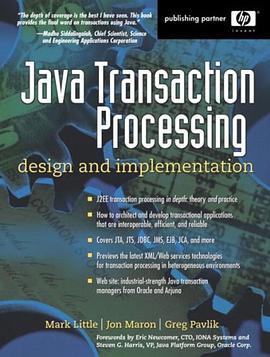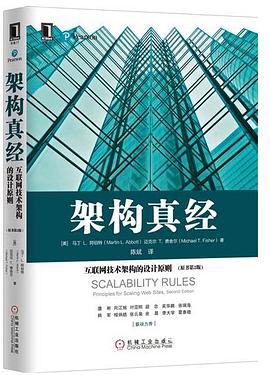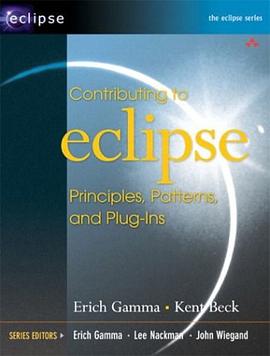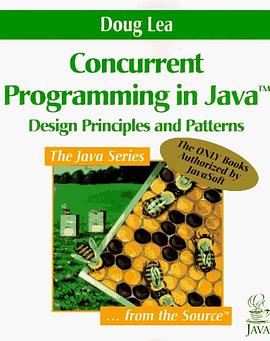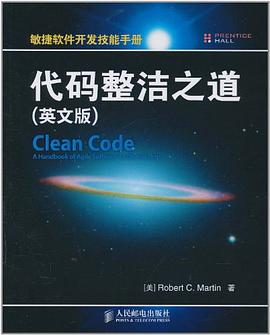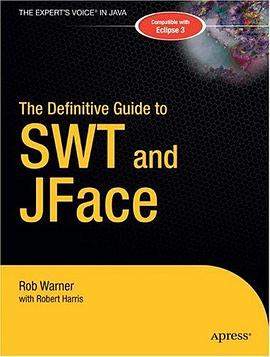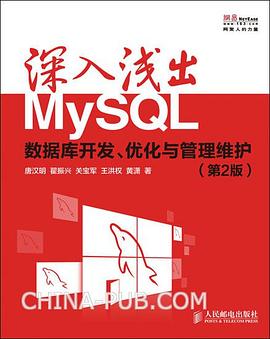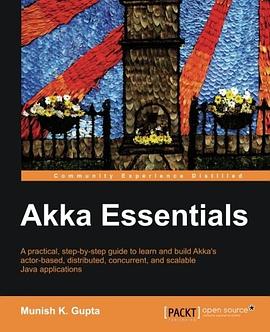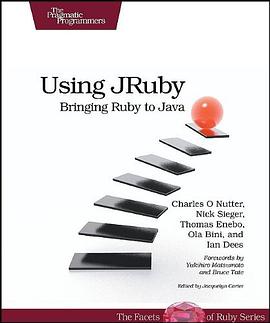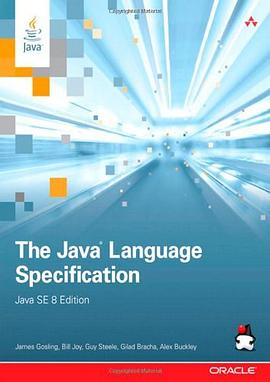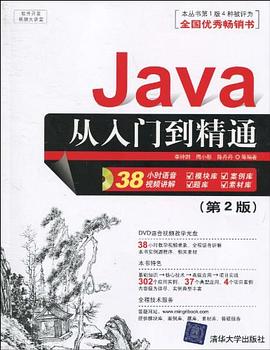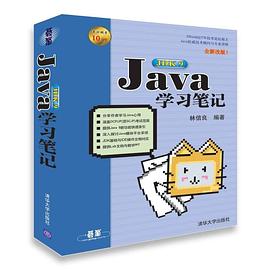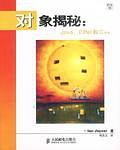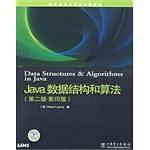

具體描述
《java編程思想(第4版)(評注版)》作者擁有多年教學經驗,對c、c++以及java語言都有獨到、深入的見解,書中以通俗易懂且小而直接的示例闡釋瞭一個個晦澀抽象的概念,是一本當之無愧的經典之作。本評注版講解瞭java設計、語法和庫的各個方麵,包括java的運算符、控製邏輯、構造、迴收、重用、接口、內部類、存儲、異常、字符串、類型、泛型、數組、容器、i/o、注釋、並發等內容。
對於國外技術圖書,選擇翻譯版還是影印版,常常讓人陷入兩難的境地。本評注版力邀國內資深專傢執筆,在英文原著基礎上增加中文點評與注釋,旨在融閤二者之長,既保留經典的原創文字與味道,又以先行者的學研心得與實踐感悟,對讀者閱讀與學習加以點撥、指明捷徑。
經過評注的版本,更值得反復閱讀與體會。希望這《java編程思想(第4版)(評注版)》能夠幫助您跨越java的重重險阻,領略高處纔有的壯美風光,做一個成功而快樂的java程序員。
著者簡介
Bruce Echel是MindView公司的CEO。該公司嚮客戶提供軟件谘詢和培訓。他是《Thinking in C++》一書的作者,並與他人閤著瞭該書的第2捲以及其他圖書。20多年來,他已發錶瞭150多篇論文,並在全世界參與教學講座和研討,他是C++標準委員會成員,擁有應用物理大學學位和計算機工程碩士學位。
劉中兵:Java研究室首席技術專傢 ,應用數學專業,曾任職於清華同方、NEC等企業,長期深入Java/Java EE大型企業應用的架構、設計與開發工作,目前專注於手機無綫互聯網與網絡通信領域的架構設計與研究工作。
圖書目錄
第1部分 基本語法
operators(新增批注30條) 1
simpler print statements 1
using java operators 2
precedence 2
assignment 3
mathematical operators 4
unary minus and plus operators 6
auto increment and decrement 6
relational operators 7
testing object equivalence 7
logical operators 9
literals 10
exponential notation 11
bitwise operators 12
shift operators 13
ternary if-else operator 16
string operator + and += 17
common pitfalls when using
.operators 18
casting operators 18
truncation and rounding 19
promotion 20
java has no “sizeof ” 20
summary 20
controlling execution
(新增批注21條) 21
true and false 21
if-else 21
iteration 22
do-while 23
for 23
the comma operator 24
foreach syntax 25
return 27
break and continue 27
the infamous “goto” 29
switch 32
summary 34
第2部分 麵嚮對象
initialization & cleanup
(新增批注55條) 35
guaranteed initialization with
the constructor 35
method overloading 37
distinguishing overloaded
methods 39
overloading with primitives 39
overloading on return values 42
default constructors 43
the this keyword 44
calling constructors from
constructors 46
the meaning of static 47
cleanup: finalization and
garbage collection 47
what is finalize() for? 48
you must perform cleanup 49
the termination condition 50
how a garbage collector works 51
member initialization 54
specifying initialization 55
constructor initialization 56
order of initialization 56
static data initialization 57
explicit static initialization 59
non-static instance initialization 61
array initialization 62
variable argument lists 65
enumerated types 70
summary 72
access control
(新增批注21條) 73
package: the library unit 74
code organization 75
creating unique package names 76
a custom tool library 79
java access specifiers 80
package access 80
public: interface access 81
private: you can’t touch that! 82
protected: inheritance access 83
interface and implementation 85
class access 86
summary 87
reusing classes
(新增批注35條) 89
composition syntax 89
inheritance syntax 92
initializing the base class 94
delegation 96
combining composition and
inheritance 97
guaranteeing proper cleanup 99
name hiding 101
choosing composition vs.
inheritance 103
protected 104
upcasting 105
why “upcasting”? 106
composition vs. inheritance
revisited 106
the final keyword 107
final data 107
final methods 110
final classes 112
final caution 113
initialization and class
loading 113
initialization with inheritance 114
summary 115
interfaces
(新增批注16條) 117
abstract classes and methods 117
interfaces 120
“multiple inheritance” in java 123
extending an interface with
inheritance 125
name collisions when combining
interfaces 127
fields in interfaces 127
initializing fields in interfaces 128
interfaces and factories 129
summary 130
inner classes
(新增批注32條) 131
creating inner classes 131
the link to the outer class 133
using .this and .new 134
inner classes and upcasting 135
anonymous inner classes 137
factory method revisited 140
nested classes 142
classes inside interfaces 143
reaching outward from a
multiply nested class 145
why inner classes? 145
closures & callbacks 148
inheriting from inner classes 150
can inner classes be
overridden? 150
local inner classes 152
inner-class identifiers 153
summary 154
error handling with excep- tions(新增批注52條) 155
basic exceptions 155
exception arguments 156
catching an exception 157
the try block 157
exception handlers . 157
creating your own
exceptions 159
exceptions and logging 161
the exception specification 164
catching any exception 164
the stack trace 166
rethrowing an exception 167
exception chaining 169
standard java exceptions 172
special case: runtimeexception 172
performing cleanup with
finally 174
what’s finally for? 175
using finally during return 177
pitfall: the lost exception 178
exception restrictions 180
constructors 182
exception matching 187
alternative approaches 188
passing exceptions to the console 189
summary 189
第3部分 數據存儲
strings(新增批注53條) 191
immutable strings 191
overloading ‘+’ vs.
stringbuilder 192
unintended recursion 195
operations on strings 196
formatting output 199
printf() 199
system.out.format() 199
the formatter class 200
format specifiers 200
formatter conversions 202
string.format() 204
regular expressions 205
basics 206
creating regular expressions 208
quantifiers 210
pattern and matcher 211
split() 218
replace operations 218
reset() 220
regular expressions and java i/o 221
scanning input 222
scanner delimiters 224
scanning with regular
expressions 225
stringtokenizer 225
summary 226
arrays(新增批注36條) 227
why arrays are special 227
arrays are first-class objects 228
returning an array 231
multidimensional arrays 232
arrays and generics 235
creating test data 237
arrays.fill() 238
data generators 239
arrays utilities 243
copying an array 243
comparing arrays 244
array element comparisons 245
sorting an array 248
searching a sorted array 249
summary 251
holding your objects
(新增批注35條) 253
generics and type-safe
containers 254
basic concepts 256
adding groups of elements 258
printing containers 259
list 261
iterator 263
listiterator 266
linkedlist 267
stack 268
set 270
map 273
queue 276
priorityqueue 277
collection vs. iterator 279
foreach and iterators 281
the adapter method idiom 283
summary 286
containers in depth
(新增批注102條) 289
full container taxonomy 289
filling containers 290
a generator solution 291
map generators 292
collection functionality 294
optional operations 297
unsupported operations 298
list functionality 300
sets and storage order 302
sortedset 306
queues 307
priority queues 308
deques 309
understanding maps 310
performance 311
sortedmap 314
linkedhashmap 315
hashing and hash codes 316
understanding hashcode() 319
hashing for speed 321
overriding hashcode() 324
choosing an implementation 329
a performance test framework 330
choosing between lists 333
microbenchmarking dangers 338
choosing between sets 339
choosing between maps 341
utilities 344
sorting and searching lists 347
making a collection or map
unmodifiable 349
synchronizing a collection or
map 350
holding references 351
the weakhashmap 353
java 1.0/1.1 containers 355
vector & enumeration 355
hashtable 356
stack 356
bitset 357
summary 359
第4部分 核心功能
i/o(新增批注89條) 361
the file class 361
a directory lister 361
directory utilities 364
checking for and creating
directories 369
input and output 370
types of inputstream 371
types of outputstream 372
adding attributes and useful
interfaces 373
reading from an inputstream
with filterinputstream 374
writing to an outputstream
with filteroutputstream 375
readers & writers 376
sources and sinks of data 377
modifying stream behavior 377
unchanged classes 378
off by itself:
randomaccessfile 379
typical uses of i/o streams 379
buffered input file 379
input from memory 380
formatted memory input 381
basic file output 382
storing and recovering data 383
reading and writing
random-access files 385
piped streams 386
file reading &
writing utilities 386
reading binary files 389
standard i/o 389
reading from standard input 389
changing system.out to a
printwriter 390
redirecting standard i/o 391
process control 391
new i/o 393
converting data 396
fetching primitives 398
view buffers 399
data manipulation with buffers 403
buffer details 404
memory-mapped files 406
file locking 409
compression 411
simple compression with gzip 412
multifile storage with zip 413
java archives (jars) 415
object serialization 416
finding the class 419
controlling serialization 420
using persistence 427
xml 432
summary 434
concurrency
(新增批注117條) 435
basic threading 435
defining tasks 435
the thread class 436
using executors 438
producing return values from
tasks 440
sleeping 442
priority 443
yielding 444
daemon threads 445
coding variations 446
joining a thread 450
catching exceptions 451
sharing resources 454
resolving shared resource
contention 454
atomicity and volatility 457
atomic classes 460
critical sections 462
synchronizing on other objects 462
thread local storage 463
terminating tasks 464
the ornamental garden 465
terminating when blocked 467
interruption 469
cooperation between tasks 475
wait() and notifyall() 475
notify() vs. notifyall() 479
producers and consumers 482
producer-consumers and queues 486
using pipes for i/o between tasks 491
deadlock 492
new library components 497
countdownlatch 497
cyclicbarrier 499
delayqueue 501
priorityblockingqueue 503
the greenhouse controller with
scheduledexecutor 505
semaphore 508
exchanger 511
simulation 513
bank teller simulation 513
the restaurant simulation 517
distributing work 521
performance tuning 526
comparing mutex technologies 526
lock-free containers 532
readwritelocks 533
active objects 535
summary 537
第5部分 高級特性
type information
(新增批注59條) 539
the need for rtti 539
the class object 541
class literals 545
generic class references 547
new cast syntax 549
checking before a cast 550
using class literals 555
a dynamic instanceof 557
counting recursively 558
registered factories 559
instanceof vs. class
equivalence 562
reflection: runtime class
information 563
a class method extractor 564
dynamic proxies 566
null objects 570
mock objects & stubs 575
interfaces and type
information 576
summary 580
generics
(新增批注126條) 583
comparison with c++ 584
simple generics 584
a tuple library 586
a stack class 588
randomlist 589
generic interfaces 590
generic methods 593
leveraging type argument
inference 594
varargs and generic methods 596
a generic method to use with
generators 596
a general-purpose generator 597
simplifying tuple use 598
a set utility 600
anonymous inner classes 603
building complex models 604
the mystery of erasure 606
the c++ approach 607
migration compatibility 609
the problem with erasure 611
the action at the boundaries 612
compensating for erasure 615
creating instances of types 616
arrays of generics 618
bounds 622
wildcards 625
how smart is the compiler? 628
contravariance 629
unbounded wildcards 632
capture conversion 636
issues 637
no primitives as type parameters 637
implementing parameterized
interfaces 639
casting and warnings 640
overloading 641
base class hijacks an interface 642
self-bounded types 642
curiously-recurring generics 643
self-bounding 644
argument covariance 646
dynamic type safety 649
exceptions 650
mixins 651
mixins in c++ 651
mixing with interfaces 653
using the decorator pattern 654
mixins with dynamic proxies 655
latent typing 657
compensating for the lack of
latent typing 660
reflection 661
applying a method to a sequence 662
when you don’t happen
to have the right interface 664
simulating latent typing
with adapters 665
using function objects as
strategies 668
summary: is casting really
so bad? 672
enumerated types
(新增批注55條) 675
basic enum features 675
using static imports with enums 676
adding methods to an enum 677
overriding enum methods 678
enums in switch statements 678
the mystery of values() 679
implements, not inherits 681
random selection 682
using interfaces for
organization 683
using enumset instead of
flags 686
using enummap 688
constant-specific methods 689
chain of responsibility with
enums 692
state machines with enums 695
multiple dispatching 700
dispatching with enums 702
using constant-specific methods 704
dispatching with enummaps 705
using a 2-d array 706
summary 707
annotations
(新增批注51條) 709
basic syntax 710
defining annotations 710
meta-annotations 712
writing annotation processors 712
annotation elements 713
default value constraints 713
generating external files 714
annotations don’t
support inheritance 717
implementing the processor 717
using apt to process
annotations 719
using the visitor pattern with
apt 723
annotation-based unit testing 726
using @unit with generics 733
no “suites” necessary 735
implementing @unit 735
removing test code 741
sum
· · · · · · (收起)
讀後感
文:@yuguo //08年9月26日更新 终于决定为这本心目中五星的书籍写一篇评论,因为目前的普遍舆论对这本书有一些误读,这些误读可能会误导初学者。我只想尽量客观的提出自己的观点,也许这不太可能,因为我认为这本书是五星的,那么多少我会作者持有偏好。那么请花一些时间阅读...
評分在Java的初学阶段,这本书的作用是让你对于Java的语法有个一定的认识,能够着手去开发一个比较拙劣的项目。因此,在一开始,我仅仅看了部分章节的基本内容。 有了一段时间的编程经验后,再次去读这本书,特别是学完《设计模式》,使得对于OO的理解,对于Java中...
評分我it行业工作10年,这本书我读了8遍,对于那些一遍都读不下来的,一张口要8K-15K的程序员来说,你真的认为你值那么多,坑爹呢吧 Update: 以上是过去的一些评论,那时的认知还存在偏差,而且有些激进。 其实,读书是为了超越自己,而非凌驾于某人之上,更没有资格对任何人、...
評分很多人学习Java是从《Thinking in Java》这本书入手的,但是我认为这本书是不适合初学者的。我认为正确的使用这本书的方法应该是作为辅助的读物。《Thinking in Java》并不是在完整的介绍Java的整个体系,而是一种跳跃式的写作方法,是一种类似tips的方法来对Java很多知识点进...
評分用戶評價
實例坑爹...唯一的優點就是紙張比較大...評注不如不加,有很多刪節未告知...最坑爹的是居然把polymorphic那一章完全刪除瞭....你知道那個Glyph的構造器的例子有多經典嗎
评分原書5星。這本實在沒法看。 隨便舉個例子,看到第37頁關於override,overload的評注我就嚇尿瞭。。劉同學您java基礎差也就算瞭,說什麼overload必須無參我就原諒你瞭,可是旁邊原書赫然給齣的代碼示例print那麼多行的XXX overloaded您愣是假裝沒看到嗎?還說這叫overwrite。。再說overwrite是個神馬東西? 還有說overload取決於參數錶我也笑瞭,您知道什麼叫signature麼,throws exception算在簽名裏不知道麼,誰說光是“參數的個數和類型”就決定瞭是否能overload?最基本的概念弄不清就齣書,真是有這麼浮躁麼?
评分實例坑爹...唯一的優點就是紙張比較大...評注不如不加,有很多刪節未告知...最坑爹的是居然把polymorphic那一章完全刪除瞭....你知道那個Glyph的構造器的例子有多經典嗎
评分實例坑爹...唯一的優點就是紙張比較大...評注不如不加,有很多刪節未告知...最坑爹的是居然把polymorphic那一章完全刪除瞭....你知道那個Glyph的構造器的例子有多經典嗎
评分適閤想要提高Java基礎(內力)的程序員們,需具備一定的英文閱讀能力
相關圖書
本站所有內容均為互聯網搜索引擎提供的公開搜索信息,本站不存儲任何數據與內容,任何內容與數據均與本站無關,如有需要請聯繫相關搜索引擎包括但不限於百度,google,bing,sogou 等
© 2025 book.quotespace.org All Rights Reserved. 小美書屋 版权所有

